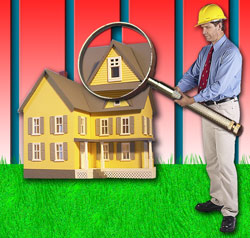
Transition, to community Associations, represents a time and series of processes when the Developer passes ownership, governance and responsibility to the Association. Transition is a time when the Association has the opportunity to uncover potential deficiencies before they become the complete responsibility of the Association.
Transition is a time to have these potential problems detected and resolved. After an Association has transitioned it will become independent of the Developer's support. If the transition has been thoroughly and adequately executed and resolved, repairs for construction deficiencies will not burden the membership.
The transition period is perhaps the most crucial time for an Association to retain the services of a qualified professional engineering firm. Transition is a time when the Association has an opportunity to uncover potentially large, costly issues, often before they become obvious to the untrained individual. For reasons stated below, qualified inspectors are essential in determining these issues.
In a typical condominium or townhome style community, at minimum , the following items need to be inspected and analyzed as part of the transition process:
Site grading and drainage:
The common areas should be inspected and/or surveyed to ensure proper grading and drainage has been established. The entire site should be analyzed, including soil characteristics. Site grading and drainage issues are among the most common initial construction issues found in new communities. They are often difficult to definitively locate and identify (due to their dependence on recent sod installation and weather) and can be expensive to correct after construction is substantially complete.
Stormwater system and components:
(including detention and retention facilities) These systems should be inspected to ensure proper construction, location, capacity, function, etc. One of the most common issues found in these systems is poor drainage and future difficulty maintaining the retention/detention facilities.

Concrete slabs on grade:
(i.e., sidewalks, patios, dumpster pads, etc.) Deficiencies such as spalling, scaling, cracking, heaving, surface drainage, thickness, riser/tread dimensions, etc., should be identified. During the transition process, concrete installations are normally new enough that these faults should not exist, and such faults are therefore normally regarded as evidence of improper construction, materials, or workmanship.
Pavement installations:
(i.e., roadways, driveways, parking areas, etc.) Deficiencies such as subgrade failure, settlement, raveling, cracking, thickness, surface drainage, etc. should be identified. As with concrete slabs on grade, these installations are generally of such a young age that failures should be regarded as very serious.
Roofs:
These inspections should include all exterior roof elements. (i.e. chimney chases, exposed flues, vents, gutters, leaders, step walls, shingle installation, ice and water shield installation, etc.). Poor workmanship on the roofs may be a common condition that is very difficult if not impossible to identify without roof-level inspections.
Foundations:
These inspections should include utility penetrations, wall condition, sill location condition, adjacent grading, roof leader discharges, and floor slab conditions. Water infiltration into basements is a serious problem, and a generally preventable deficiency.
Stoops, decks, and balconies:
These inspections should include railings, structural support and connections, materials and attachments and stability. Decks and balconies are sometimes constructed poorly or inadequately protected against water/moisture damage, which can result in premature failure.
Common area landscaping:
Plantings should be inspected for size, type, location, installation and health. The detail and precision of landscape inspections are often limited by the level of detail in the approved landscape plans.

Lighting:
Lighting fixtures should be inspected for size, type, location and installation, and it may be useful to inspect the site after dark to determine illumination levels and coverage.
Building waterproofing and exterior finish materials
(stucco, EIFS, and/or siding) Installation and detailing should be inspected, as well as penetrations, interface with dissimilar materials, flashings and grade clearance. Due to the quality and visibility of these types of installations in most communities, issues involving the exterior finish materials can be expensive to remediate.
Retaining walls:
Walls should be inspected for movement, settlement or deflections, stability and drainage. Depending on proximity to other installations and accessibility, retaining wall failures can range from minor to catastrophic.
Miscellaneous Site Structures:
Fences, decorative entrance structures, gazebos, stone or concrete paved walks should be inspected for type, sizes, condition and installation details.
Interior inspections:
These inspections should include interior of the roof system, structural components of the unit, insulation, foundation walls and slabs in basements, and any signs of settlement. Interior inspections may also include spot testing of plumbing, wiring, or other systems, but these components are normally homeowner property and are, therefore, not necessary parts of a transition evaluation in most cases.
Recreation facilities:
The buildings and site should be analyzed in similar fashion to the items described above. All amenities, furnishings, appliances, etc. should be inspected.
Finalizing the Inspections
All of the above observations should be compared to the approved design plans (site and building), code requirements, industry standards and acceptable workmanship. There may be additional testing or destructive inspections that will need to be performed to better analyze a suspected condition. The developer should supply the Association with a complete set of design plans, as approved by the municipality.
The final report should describe the inspection and analysis findings in detail as well as the recommendations for a proper repair of any deficiencies found. The deficiencies should be corrected prior to the transfer of ownership to the association.
 Print
Print Email
Email







